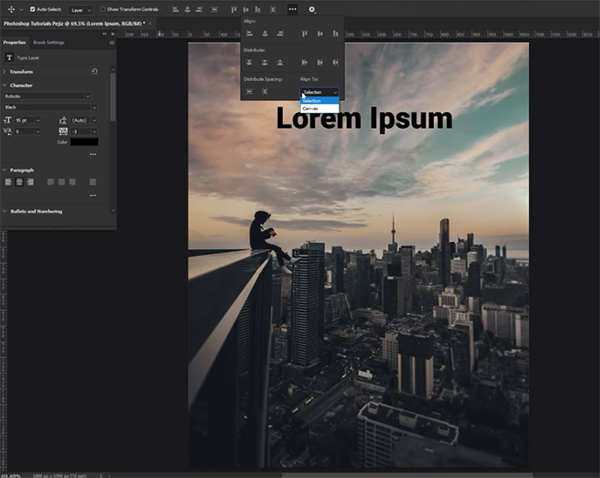Imagine seeing a photo you created displayed in an online gallery for all to admire. It could even end up being selected as the Shutterbug Photo of the Day and posted on our homepage.
Here’s the quick and easy procedure, along with some tips to help you navigate to the upload page with just one click in the future. It’s free, it’s fun and it’s a great way to share your creativity with the world.
Today the spotlight is on Jeff Van Scoyk, an amazing photographer and frequent Photo of the Day contributor. Tomorrow — the spotlight could be on you.

When you post to our Photo of the Day Gallery there’s a chance that your image may be featured on our homepage for all to see. The internet reaches even the most remote corners of our planet and endures essentially forever. You may even hear from friends you haven’t seen in years, after they see your photo on Shutterbug.

Get Started
It all begins with a Shutterbug account. Registering is FREE and fast, and we do not misuse your contact information. Once registered, log in and navigate to the GALLERIES tab. From there select Shutterbug Photo of the Day. Go Directly To Upload
Go Directly To Upload
If you are logged into your account and want to go directly to the upload section, click on this Go To Upload link. Bookmark it so in the future you’ll be able to connect in seconds. Just remember you must be logged in to your Shutterbug account for the link to work. During the upload process, make sure you select Shutterbug Photo of the Day from the Photo Category box.
You can create a persistent login (“Remember me”) event so you don’t have to log in fresh every time you visit our website. If you see the warning “You are not authorized to access this page” it means you’re not logged in.
A day or two after uploading, check and confirm that the image is visible in the gallery. If you see a blank entry that reads, “0kb,” something went wrong. Try again.

Specifications
Every day, one image from our Photo of the Day Gallery is featured on our homepage as a thumbnail that links to the larger version. The aspect ratio of the thumbnail image window is 16×9. If your image doesn’t match, no problem — the system will automatically make it fit. It’s not something we do; our software crops without our guidance.

The full, uncropped image is available in the gallery, but the thumbnail that attracts viewers to click may be altered unless you make aspect ratio adjustments before you post.
Maximum file size is 5 megabytes. That’s plenty big for web viewing. Sometimes we see posts that have 0kb files size indicated. That usually means the poster tried to upload a file that was too large.

Please include explanatory details about how and where the picture was taken. Please list camera, lens, f/stop, shutter speed and ISO setting so that our readers can learn from your experience. Details about the location are always good, and if you shot on film and scanned, or used a smart phone, pinhole camera, mirrorless miracle, beefy DSLR or anything else, readers want to know all the technical details you’re willing to share.

Common sense tells you to not reveal the name or any personal identification information about people in the picture, and we forbid it. And while we are on that subject, we strongly emphasize that by submitting a photo that contains recognizable people, you expressly confirm that you have perpetual unrestricted permission from the subject(s).

All Images are Reviewed
All submitted images are carefully reviewed before they are published. No advertising is allowed. And needless to say, we’re not interested in receiving any NSFW images.
Generally, the images you upload are published to the gallery after review the next day, usually before 7am Eastern. But the special Photo of the Day badge might take a little longer. The image you submit might appear as the Photo of the Day a few days after you submit it, if it’s received on the same day as a more compelling picture. So even if you upload a great shot on Monday and it’s not selected as Tuesday’s PoD, it may still be chosen later.

Inspiration & Tips
Take a look at our Photo of the Day gallery to see some truly inspiring work that covers a wide range of subjects. Bird photography is always a favorite, and we see many outstanding photos of our feathered friends. Night scenes and landscapes are likewise prominent. Seasonal images are always popular.
Here are some valuable tips from our readers and staff.
Express yourself in color or monochrome—it’s all up to you. Show off your photo editing skills, too, and if you use a certain plug-in or editing technique, be sure to tell everyone what you used.

Avoid centering the subject if you can. Feel free to break this rule when in-the-middle is the layout you prefer, but normally a photo becomes stronger when the subject is artfully composed in the frame. Cameras tend to focus on what’s in the center, but photographers don’t have to.
Exercise your creative spirit. There are no “bad” photos aside from those that are corrupted technically (under/over exposed, blank, unintentionally grainy, blurry or out-of-focus). Share your imagination with everyone.
Try something new or different. Shoot monochrome, high contrast black & white, streaking lights, Cross Processed images—whatever you can imagine. Especially, experiment with any creative or special effects features built into your camera.

Photo of the Day Celebrity Jeff Van Scoyk
A long-time photography professional, Jeff Van Scoyk has been capturing compelling photos since the days when hunter-gatherer tribes still used goat skin to record images. Clearly, he’s been honing his skills all that time, as you can see in the masterful artwork displayed throughout this article.

He’s also a very accomplished writer, and has contributed to Shutterbug, including this very informative guide to candid public photography, “Streetwise Street Photography“ which includes several inspiring images that will help you channel your inner Henri Cartier-Bresson.
Additionally, Jeff was interviewed for a more technical tutorial, “Miops Splash Water Drop Kit Review & Examples“ in which he teaches us how to use the Miops Splash, a $120 photo accessory for controllable waterdrop photography.

Register, Log In and Upload
Once you register for an account — it’s free and takes just a second — log in and upload.
Here again is the DIRECT LINK to upload your photos. Bookmark it. To access the upload area via this link you must have an account and be logged in. You can create a persistent login so you do not have to log in fresh every time you visit our website.

See You at the Gallery!
We look forward to seeing your photos. Good luck landing the honor of being selected as a Photo of the Day winner.
∞ Jon Sienkiewicz




 Go Directly To Upload
Go Directly To Upload















